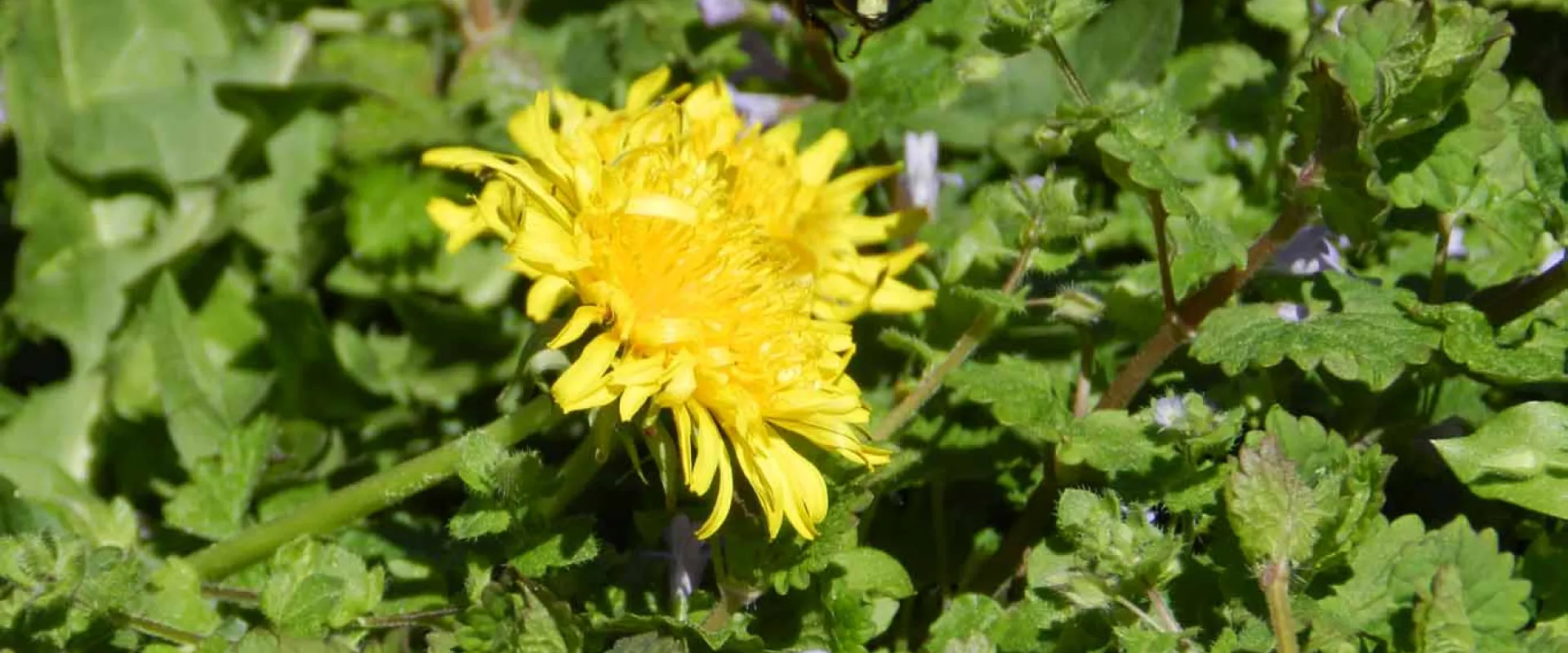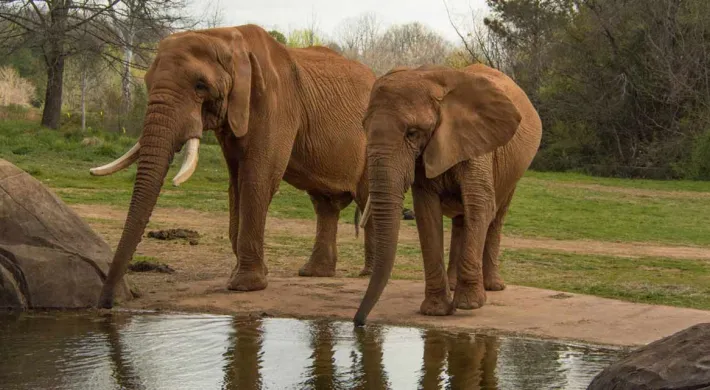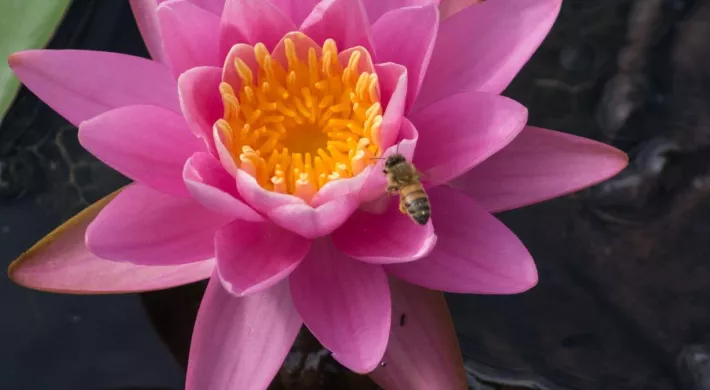Written by Bob Langston, Sustainability & Conservation Outreach Coordinator, North Carolina Zoo
“A speck of yellow in your lawn of Green, Is to some, a BEE-youtiful scene!”
March and April across North Carolina’s Piedmont signal the return of plants and animals from winter’s more dormant status. Some of the first signs that everything is waking are the gorgeous purple buds and flowers of the Redbud Tree. There are many others, and not all are found above the ground.
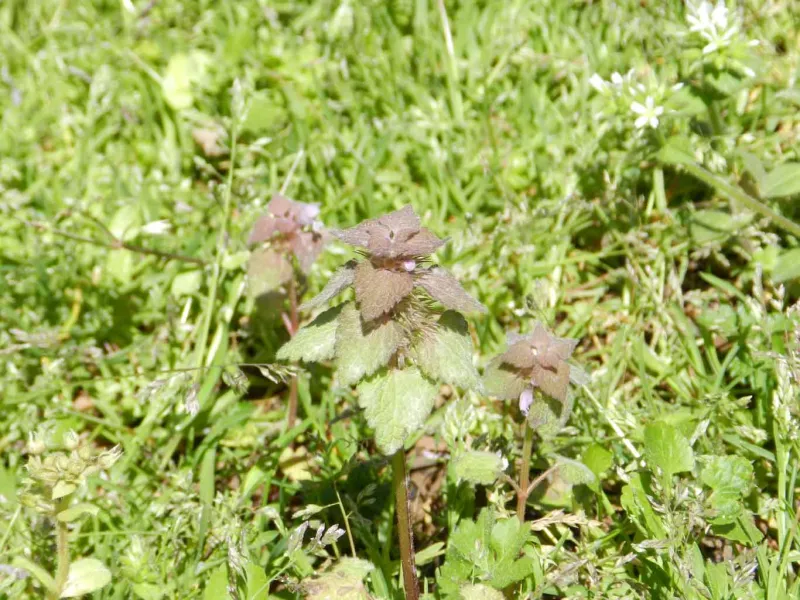
Often, the first of spring’s color offerings are the yellow blooms of Dandelions on our lawns. For some, the name “Dandelion” is a call to arms. Because these flowers pop up without being planted or sown, some homeowners consider these native plants invaders, weeds that will spoil the green carpet of pure, green turfgrass.
But Dandelions are not the sole trespassers in this assault upon suburban tranquility. Bluets, with their tiny, four-petal blooms, are also present. Henbit, a native mint with light violet, trumpet-shaped flowers, will show up as the temperatures warm, often accompanied by the pale violet blooms of Deadnettle.
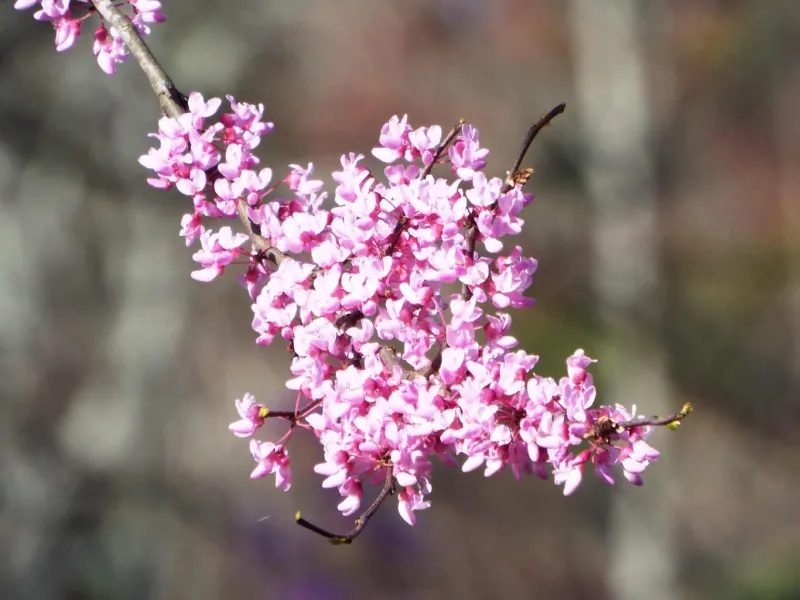
Redbud branch
There are many others, and as the spring progresses, these beautiful wildflowers have a purpose, though we may not yet appreciate it. A person far wiser than I am once stated that a weed is simply a plant that is growing where I did not plant one. This may be a little oversimplified, but when those native wildflowers show up amongst the Fescue Turfgrass in some lawns, individuals may arm themselves with assorted chemicals and head out to maintain a perfectly manicured, single-species yard. For me, however, neatly mown wild plants have perpetuated the illusion that I have a lawn for years.
In the world of naturalists and natural science, the diversity of plants and animals is a good thing.
An abundance of different plants in my yard protects the soil. Should drought or some other occurrence cause one of the plants growing outside to go away, others will remain to stabilize the soil and prevent erosion.
One reason I particularly welcome the first flowers of spring, regardless of the plant, is what these colors signify. Flowers provide a food source for many beneficial insects that will guarantee that we have Tomatoes, Squash, Apples, and so many other fruits and vegetables later in the year.
In mid-March, I begin scanning those wild flowering plants in the yard for evidence that insects have ended their winter rest. About two weeks back, the first bees showed up. At first, it was a lone Honeybee. Then several of the other natives became active, feeding on the Dandelions, Violets, and other flowers. Bumblebees, Carpenter Bees, and some of the smaller natives that elude my identification. This past Saturday, the first butterfly, A Tiger Swallowtail, emerged and began exploring the area around my house.
These are the pollinators—insects that will germinate the plants from which one of every three bites of our food will come. Welcome them, for they do us a great service.
If, however, one wishes only to have that lush green, single-species lawn that will require the application of herbicides, what then? Herbicides, or chemicals that will kill unwanted plants, will rob pollinating insects, a vital food source. Doing so will mean that growing fruits and vegetables can become more difficult and expensive.
Beyond eliminating their food source, many pollinating insects are negatively affected by applying herbicides, particularly Glyphosate. Known by several brand names, this herbicide has far-reaching impacts across the planet. Recent studies have found out why. The chemical is not directly toxic to most insects, fish, amphibians, reptiles, birds, or mammals, but it can kill them indirectly in complex ways and lead to declines.
Pollination Station
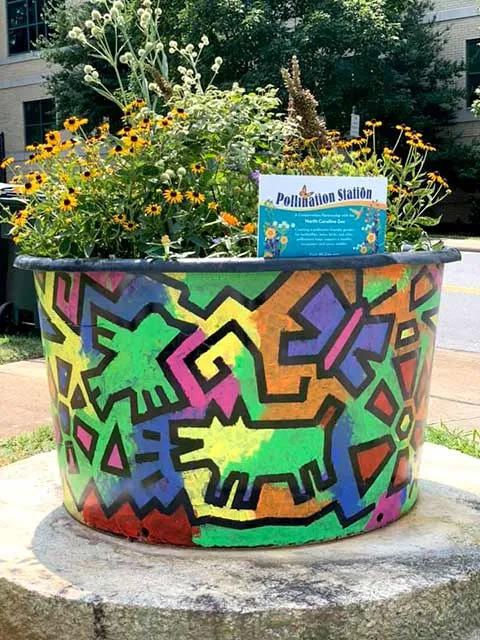
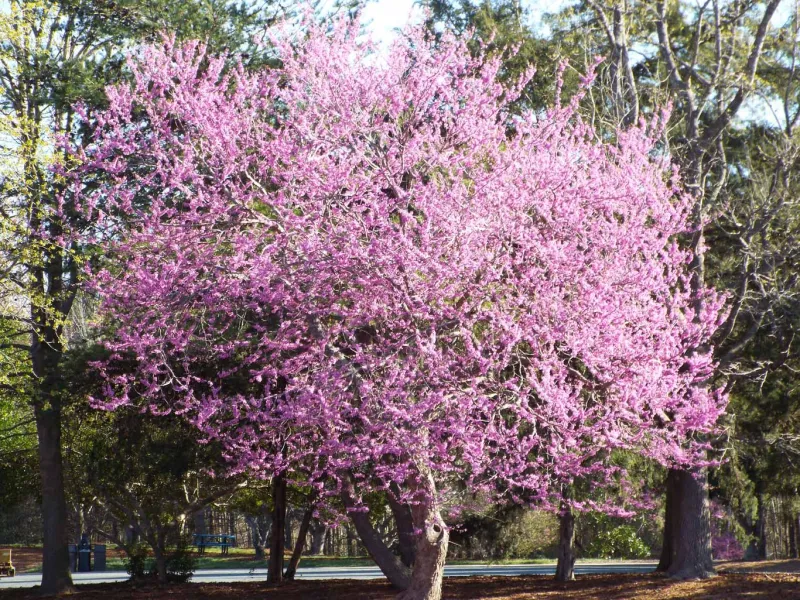
Redbud Tree
Dr. Kasie Raymann of the University of North Carolina at Greensboro has discovered that when bees feed upon plants treated with Glyphosate, this chemical will make its way into their digestive tract. Once there, the chemical destroys the community of bacteria, fungi and other microorganisms that allow the bee to digest food properly. Without these organisms to aid digestion, the bee quickly dies, even without being poisoned directly. Her research has also indicated that many insects can get glyphosate into their system purely by external contact. The chemical can readily spread throughout the colony in social insects.
Research continues regarding impacts on butterflies and other beneficial insects. Applying this herbicide requires action—we must purchase the chemical and use the chemical. This is a human-caused negative impact on the natural world and is not an inevitability.
As Earth Day, April 22, 2022, approaches, we have an opportunity to protect pollinating insects in many ways.
Initially observed on April 22, 1970, Earth Day is an opportunity for each of us to practice Environmental Stewardship and Service. Let us use the spring of 2022 as an occasion to wean ourselves from such detrimental herbicides. Getting rid of unwanted weeds may be accomplished through other means, though work is required. Get outside and pull them. You will appreciate being outside on a nice spring day! Or let them grow—the bees and other insects will benefit, as will people. Finally, plant new flowers, especially native species that provide the most benefits to our pollinators.
The insects will appreciate the opportunity to visit with you and feed. You may appreciate the colors of both the plants and guests in your garden. We will all benefit by allowing those yellow, white, blue, and purple invaders into our yards in the long run.
Bob Langston, your Neighborhood Naturalist
Photographs by Bob Langston
Pollination Station Planter Photographs by Kathy Osborne and Becky Souder Knorpp
